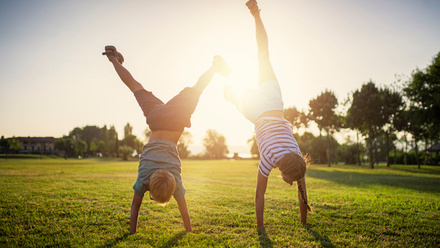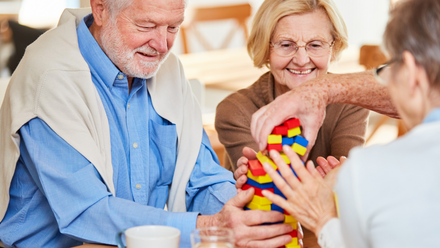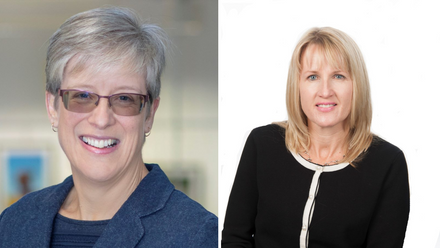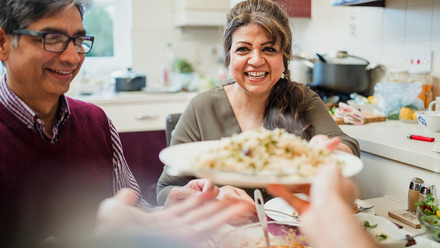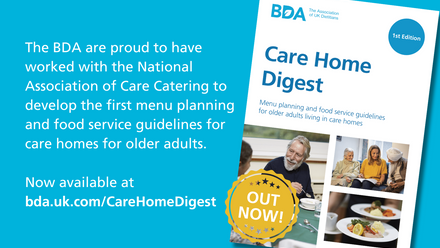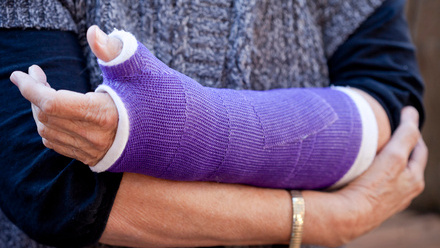Osteoporosis is a condition where bones become thin and their strength is reduced. This makes them more likely to break. It affects both men and women but is most common after the menopause.
Osteoporosis is often only diagnosed when a fall or sudden impact causes a bone to break (fracture). Diagnosis comes from checking your bone mineral density on a DEXA scan.
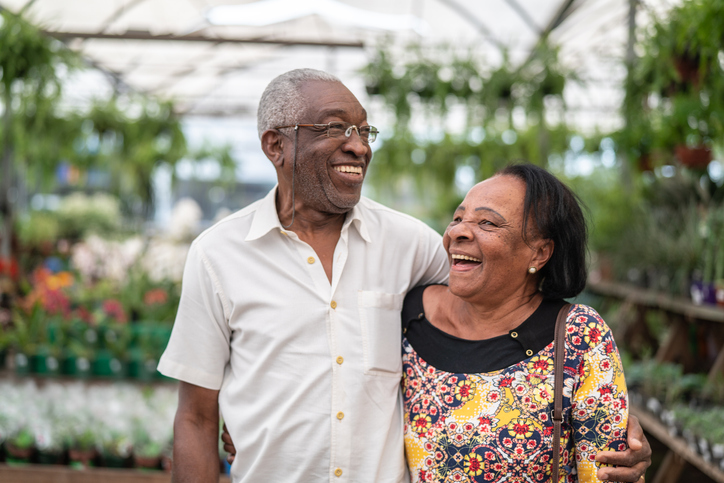
Diet and bone health
Bones are made of protein fibres filled in with calcium and other minerals to create a hard structure. Bones are always changing in response to our lifestyle. During childhood and early adulthood they develop their strength but from our mid-30s onwards our bones start to lose calcium slowly, causing bone thinning. It is important to strengthen bones in our first 30 years to make sure we have enough calcium and other minerals for the rest of our life. This will help reduce the risk of osteoporosis. A bone-friendly diet and lifestyle is useful at any age though, to strengthen bone, or minimise age-related bone loss. Try to:
- Consume enough calcium and vitamin D
- Eat a healthy balanced diet including at least 5 fruit and vegetables a day to make sure you get all of the vitamins and minerals that are needed for bone health
- Eat enough protein - aim for meat, fish, dairy or plant-based alternatives (like tofu or pulses) twice a day
- Take a combination of regular weight bearing and muscle strengthening exercises. Inactive or bed bound people struggle with this, so they find it difficult to strengthen bones, even if their diet is rich in calcium
How much calcium do I need?
An ideal daily calcium intake for adults is 700mg (up to 1000mg for those undergoing osteoporosis drug treatment). You can see if your diet is giving you enough by checking the table below.
If you find it hard to make up this amount from diet alone, you should take a daily calcium supplement providing 400-600mg of calcium, preferably one that also contains 10µg of vitamin D. Take supplements with food to help aid calcium uptake into your body. If you have been diagnosed with osteoporosis your doctor will advise you on which supplement you should take.
|
Calcium Sources |
Calcium (mg) |
|
Milk, 1/3 pint (200ml) |
240 |
|
Calcium-enriched soya/oat milk alternative240 (200ml) |
240 |
|
Hard cheese, matchbox-size (30g) |
240 |
|
Yoghurt, plain/fruit 1 pot (150g) |
240 |
|
Sardines with bones, ½ tin (60g) |
240 |
|
Rice pudding, ½ large tin (200g) |
180 |
|
Tofu / soya bean curd, (60g) |
180 |
|
Calcium fortified bread, (180mg)180 |
180 |
|
Spinach, boiled, 1 serving (120g) |
180 |
|
Figs, dried, 4 |
180 |
|
Cheese triangle (15g) |
120 |
|
Cottage Cheese, 1 pot (100g) |
120 |
|
Custard, 1 serving (120ml) |
120 |
|
White bread, 2 large slices |
120 |
|
Soya yogurt/dessert/custard (125g) |
120 |
|
Baked beans, small tin (220g) |
120 |
|
Fromage frais, 1 portion (50g) |
60 |
|
Tinned salmon, ½ tin |
60 |
|
Wholemeal bread, 2 large slices |
60 |
|
Hummus, 1 serving (150g) |
60 |
|
Brazil nuts or almonds (30g) |
60 |
|
Orange 1 |
60 |
|
Broccoli, boiled, 2 florets (85g) |
40 |
How much vitamin D do I need?
Vitamin D helps our bodies absorb calcium from our food and into our body where it helps strengthen bones. You are at risk of vitamin D deficiency if you have darker coloured skin, you always cover up outside, avoid the sun, work long hours (e.g. work a night shift) or if you are house-bound, pregnant or breast-feeding, or are aged 65+. Babies, young children, and children and adolescents who don’t spend much time outside are also at risk. Wearing sunscreen also reduces vitamin D production in the skin and if you live in an area where the air quality is polluted. People living with obesity are also more likely to have low levels of vitamin D.
It is the sun’s ultraviolet rays that allow vitamin D to be made in the body. In the UK, ultraviolet light is only strong enough to make vitamin D on exposed skin (on the hands, face and arms or legs) during April to September. But it’s important to know that you don’t have to sunbathe in order to get enough.
Vitamin D from sunlight can be stored in the body for use throughout the year. During the autumn and winter, we get vitamin D from our body’s stores and from food sources, but these are insufficient to keep up vitamin D levels. All adults should consider taking a daily 10µg (400IU) vitamin D supplement, especially during autumn and winter.
Be aware that strong sun also burns skin so we need to balance making vitamin D with being safe in the sun. Take care to cover up or protect your skin with sunscreen before you turn red or get burnt. Find out more about sun safety on the NHS website.
Dietary sources of vitamin D rich foods
- Oily fish, egg yolk, meal offal and milk (this varies during the seasons) are all good sources of vitamin D
- Cod liver oil also contains a lot of vitamin D, but you shouldn’t take this if you are pregnant
- Fortified margarines, fruit juices and breakfast cereals all have vitamin D added
For more information on vitamin D see our Vitamin D Food Fact Sheet
Other important lifestyle factors
Alcohol
A high alcohol intake is associated with an increased risk of osteoporosis, fracture risk and falls. You are advised to stay within the government guidelines.
Smoking
Smoking leads to an increase in bone loss, risk of osteoporosis and hip fracture.
Low oestrogen levels
Oestrogen helps your body take up or ‘absorb’ calcium. If you have relative energy deficiency in sport (RED-S) as the result of insufficient energy intake or excessive energy expenditure or gone through the menopause, the low oestrogen levels puts you at more risk of osteoporosis. Following a diet rich in natural oestrogens (like soya) could help prevent osteoporosis after the menopause.
Weight
Being underweight (with a BMI under 19) increases your risk of osteoporosis. This may be because body fat stores help to keep oestrogen levels. You are advised to maintain a healthy body weight. You can learn more about weight gain in our Malnutrition Food Fact Sheet. (link) If you have any concerns talk to your doctor, dietitian or other healthcare provider.
Other health conditions
If your diet has been restricted in any way by long-term poor health, or if you have certain health conditions/take certain medications you may be at risk of osteoporosis. Conditions commonly associated with osteoporosis include: Crohns/ulcerative colitis, coeliac disease, eating disorders and conditions that are treated with corticosteroids such as rheumatoid arthritis. Talk to your doctor if you are concerned.
Top tips
-
Osteoporosis is a condition where the bones become thinner due to calcium loss, so a bone-friendly diet and lifestyle is useful at any age to strengthen bone or minimise age-related bone loss
-
Consume enough calcium and vitamin D
-
Eat a healthy balanced diet including at least 5 fruit and vegetables a day to make sure you get all of the vitamins and minerals that are needed for bone health
-
Eat enough protein - aim for meat, fish, dairy or vegetarian alternatives (like tofu or pulses) twice a day
-
Take a combination of regular weight-bearing and muscle strengthening exercise.
Source(s)
National Osteoporosis Guideline Group (NOGG, updated 2021)
Clinical guideline for the prevention and treatment of osteoporosis. Available from: https://www.nogg.org.uk/full-guideline [Accessed 04.03.23]
NHS (2022) Osteoporosis Available from: https://www.nhs.uk/conditions/osteoporosis/ [Accessed 04.03.23]
NHS (2020) Vitamins, supplements and nutrition in pregnancy. Available from: https://www.nhs.uk/pregnancy/keeping-well/vitamins-supplements-and-nutrition/ [Accessed 04.03.23]
NICE CG 146 (updated 2017) Osteoporosis: assessing the risk of fragility fracture. Available from https://www.nice.org.uk/guidance/cg146 [Accessed 04.03.23]
NICE QS 149 (2017) Osteoporosis. Available from https://www.nice.org.uk/guidance/qs149/history [Accessed 04.03.23]
Practice-based Evidence in Nutrition (2023) Bone Health and Osteoporosis Practice Guidance Toolkit. Available from: https://www.pennutrition.com/KnowledgePathway.aspx?kpid=16669&tkid=21818 [Accessed 04.02.23]
Royal Osteoporosis Society (2018 v2 2020). Vitamin D and Bone Health: A Practical Clinical Guideline for Patient Management Available from: https://strwebprdmedia.blob.core.windows.net/media/ef2ideu2/ros-vitamin-d-and-bone-health-in-adults-february-2020.pdf [Accessed 04.03.23]
Scientific Advisory Committee on Nutrition (SACN, 2016). Vitamin D and Health Available from: https://www.gov.uk/government/publications/sacn-vitamin-d-and-health-report [Accessed 04.03.23]


